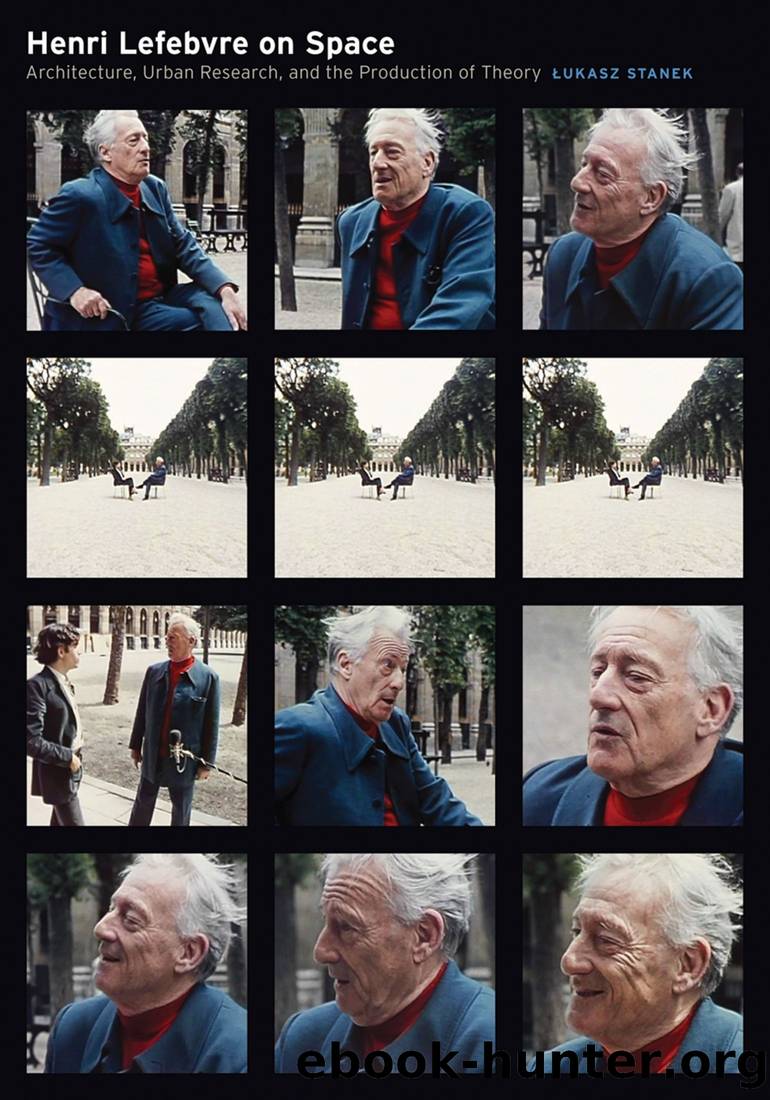Henri Lefebvre on Space: Architecture, Urban Research, and the Production of Theory by Łukasz Stanek

Author:Łukasz Stanek
Language: eng
Format: mobi
ISBN: 9780816666171
Publisher: Univ Of Minnesota Press
Published: 2011-08-01T21:00:00+00:00
(top) Postcard from Club Méditerranée in Palinuro, 1979, described by Henri Raymond as âa concrete utopiaâ of the French consumer society.
(bottom) Picture of the beach from the collection of photographs from Norbert Gutermanâs visit to Navarrenx. Courtesy of Norbert Guterman Archive, Butler Library, Columbia University, dossier Henri Lefebvre, 1939â49.
of modernization, as conveyed by many among the architectural avant-gardes of the 1920s and 1930s, which required complementing the minimal housing (Existenzminimum) by means of social facilities, or âcollective luxury,â in Fourierâs terms. At the same time, if spaces of leisure can be read as prefiguring a differential space, it is because âin and through the space of leisure, a pedagogy of space and time is beginning to take shape.â62 This pedagogy is not an institutionalized disciplinary practice but a formation of senses, like in Physiologie du Goût (1825), by Jean-Antheleme Brillat-Savarin, a contemporary of Fourier who postulated a pedagogy of the sense of taste. This sensual experience is not an instance of forgetting but rather a proposal of a different way of life that comes as a hunch in privileged moments at the beach, the park, or the garden of a pavillon, however commodified, ridiculous, or negligible they might appear within an orthodox Marxist analytical framework.
Nanterre as Differential Space
Lefebvreâs reading of Fourier suggests the need to think of differences not as a system of complementary elements (what Lefebvre called âinducedâ differences) but rather as related to one another in a dialectics of unity and contradiction, âproducingâ a rupture of the system.63 In other words, association and gathering, which Fourier envisaged as specific to âunitary architecture,â are not sufficient criteria of the envisaged performance of a differential space, and the complementary processes of exclusion, repulsion, and dispersion must be accounted for. Precisely the simultaneity of these contradictory movements is what Lefebvre aimed at capturing in his concept of dialectical centrality as the universal form of social space, and an examination of specific historical centralities is what can advance his concept of differential space.
Of Lefebvreâs historical writings, the book Lâirruption de Nanterre au sommet (The Explosion: Marxism and the French Revolution, 1968)âa participatory observation of May â68, which he witnessed at the university in Nanterre âlends itself to a reading as an approximation of the performance of differential space, in particular when contextualized with the study La proclamation de la Commune, 26 mars 1871 (1965), resulting from his archival research in the Feltrinelli Foundation in Milan.64 For Lefebvre, March 1871 and May 1968 became occasions to examine moments of the production of centralities in a violent reclamation of the urban center by those who were excluded: âPeople who had come from the outlying areas into which they had been driven and where they had found nothing but a social void assembled and proceeded together toward the reconquest of the urban centers.â65 In both cases, centralities were produced as concatenations of violence and playfulness, celebration and struggle (Lefebvre reproduced in his book the poster of a public concert organized by the Communards): a dialectical
Download
This site does not store any files on its server. We only index and link to content provided by other sites. Please contact the content providers to delete copyright contents if any and email us, we'll remove relevant links or contents immediately.
Kathy Andrews Collection by Kathy Andrews(10510)
The remains of the day by Kazuo Ishiguro(7544)
Spare by Prince Harry The Duke of Sussex(4188)
Paper Towns by Green John(4165)
The Body: A Guide for Occupants by Bill Bryson(3791)
Be in a Treehouse by Pete Nelson(3207)
Harry Potter and the Goblet Of Fire by J.K. Rowling(3026)
Goodbye Paradise(2951)
Never by Ken Follett(2873)
Into Thin Air by Jon Krakauer(2695)
The Remains of the Day by Kazuo Ishiguro(2614)
The Genius of Japanese Carpentry by Azby Brown(2602)
The Cellar by Natasha Preston(2592)
Drawing Shortcuts: Developing Quick Drawing Skills Using Today's Technology by Leggitt Jim(2529)
120 Days of Sodom by Marquis de Sade(2428)
Architecture 101 by Nicole Bridge(2348)
The Man Who Died Twice by Richard Osman(2291)
Machine Learning at Scale with H2O by Gregory Keys | David Whiting(2269)
Fairy Tale by Stephen King(2059)
